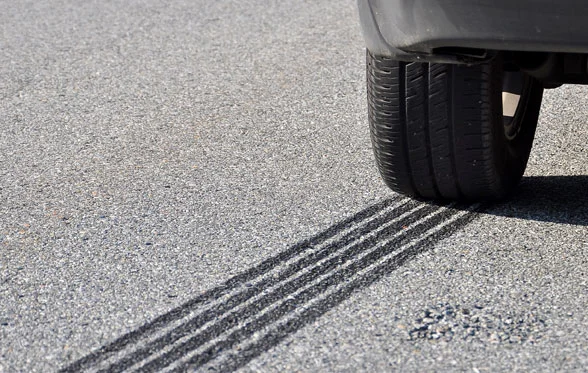On 31st July 2009, a new EC Regulation was published which radically changes the structure and format of the European Union's type approval legislation and introduces a large number of new technical requirements. This new Regulation, (EC) No. 661/2009, is entitled "type approval requirements for the general safety of motor vehicles, their trailers and systems, components and separate technical units intended therefor" and it contents fall into three main areas:
Legislative Simplification
The current type approval requirements for the European Union are contained within a "framework" Directive (2007/46/EC) and 60 "separate" Directives and Regulations. Each of these "separate" Directives and Regulations covers an individual subject area (e.g. sound levels, lighting installation, braking, frontal impact, wash/wipe, etc.). This new EC Regulation repeals and replaces 50 of these "separate" Directives, by consolidating all of the technical requirements from these 50 "separate" Directives into the new Regulation. However, rather than including all of the text from all 50 "separate" Directives, the new Regulation includes references to the corresponding Regulations of the United Nations Economic Commission for Europe (UN ECE).
Note: The 10 "separate" Directives and Regulations which are not being repealed and replaced by this new Regulation are those relating to environmental subjects (e.g. emissions, sound levels, recyclability, mobile air conditioning systems, etc.) and those relating to pedestrian protection and hydrogen fuel systems.
Mandatory Fitment of New Technologies
The new Regulation introduces requirements which will mandate the fitment of a number of new technologies to various categories and classes of vehicle.
The Regulation mandates the fitment of advanced emergency braking systems (AEBS) and lane departure warning (LDW) systems to passenger vehicles of categories M2 and M3 and to goods vehicles of categories N2 and N3, although some exemptions from the mandatory fitment requirements are expected to be added at a later date by the implementing Regulation. The introduction dates for the mandatory fitment of AEBS and LDW systems are 1st November 2013 for new types of vehicle and 1st November 2015 for all new vehicles.
The Regulation also mandates the fitment of gear shift indicators (GSI) to M1 category vehicles with a reference mass not exceeding 2610 kg, with effect from 1st November 2012 for new types of vehicle and from 1st November 2014 for all new vehicles.
Furthermore, the Regulation mandates the fitment of electronic stability control (ESC) systems to all categories of motor vehicle (i.e. M1, M2, M3, N1, N2 and N3 category) and to all heavy trailers (O3 and O4 category), although some exemptions from the mandatory fitment requirements are permitted. For M1 and N1 category vehicles, the fitment of ESC systems becomes mandatory from 1st November 2011 for new types of vehicle and from 1st November 2014 for all new vehicles. For M2, M3, N2, N3, O3 and O4 category vehicles, the introduction dates for the mandatory fitment of ESC systems vary depending on the vehicle category and on the type of brake system fitted (e.g. hydraulic, pneumatic, electric, etc,). In general, the mandatory ESC fitment dates specified in this new Regulation are aligned with those contained in ECE 13.11, but there are a number of instances where the dates differ.
Tyre Related Requirements
The proposed new Regulation introduces a number of new requirements relating to tyres aimed at reducing both rolling noise emissions and CO2 emissions, whilst maintaining safety levels.
To address noise emissions, the new Regulation requires tyres to comply with more stringent limits on rolling noise emissions. Compliance with these new noise limits is mandated from 1st November 2012 for new types of tyre, from 1st November 2013 for new types of vehicle and from 1st November 2016 for all new tyres and vehicles.
With regard to reducing CO2 emissions, the new Regulation contains two new requirements:
- The first mandates the fitment of tyre pressure monitoring systems (TPMS) to all M1 category vehicles from 1st November 2012 for new types of vehicle and from 1st November 2014 for all new vehicles.
- The second introduces maximum rolling resistance limits for tyres, with these limits being further reduced in a second stage. Compliance with the first stage limits is mandated from 1st November 2012 for new types of tyre, from 1st November 2013 for new types of vehicle, from 1st November 2014 for all new C1 and C2 class tyres and vehicles fitted with such tyres and from 1st November 2016 for all new C3 class tyres and vehicles fitted with such tyres. Compliance with the second stage limits is mandated from 1st November 2016 for new types of tyre, from 1st November 2017 for new types of vehicle, from 1st November 2018 for all new C1 and C2 class tyres and vehicles fitted with such tyres and from 1st November 2020 for all new C3 class tyres and vehicles fitted with such tyres.
To ensure that there is not a "trade off" in terms of tyre safety levels to achieve these reductions in rolling noise emissions and rolling resistance, the new Regulation also introduces minimum requirements on wet grip performance for C1 class tyres. The mandatory compliance dates for these new wet grip performance requirements are aligned with those for the first stage of the rolling resistance limits.
